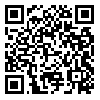Volume 17, Issue 3 (Autumn 2025)
2025, 17(3): 31-39 |
Back to browse issues page
Download citation:
BibTeX | RIS | EndNote | Medlars | ProCite | Reference Manager | RefWorks
Send citation to:



BibTeX | RIS | EndNote | Medlars | ProCite | Reference Manager | RefWorks
Send citation to:
Farjam E, Charoghchian Khorasani E, Afzalaghaee M, Peyman N. The Effect of Models and Theories in Educational Interventions on Puberty Physical Health among Adolescent Girls in Iran: A Systematic Review. North Khorasan University of Medical Sciences 2025; 17 (3) :31-39
URL: http://journal.nkums.ac.ir/article-1-3262-en.html
URL: http://journal.nkums.ac.ir/article-1-3262-en.html
1- Student Research Committee, School of Health, Mashhad University of Medical Sciences, Mashhad, Iran
2- Department of Health Education and Promotion, School of Health, Mashhad University of Medical Sciences, Mashhad, Iran
3- Social Determinants of Health Research Center, Mashhad University of Medical Sciences, Mashhad, Iran
4- Department of Health Education and Promotion, School of Health, Mashhad University of Medical Sciences, Mashhad, Iran ,peymann@mums.ac.ir
2- Department of Health Education and Promotion, School of Health, Mashhad University of Medical Sciences, Mashhad, Iran
3- Social Determinants of Health Research Center, Mashhad University of Medical Sciences, Mashhad, Iran
4- Department of Health Education and Promotion, School of Health, Mashhad University of Medical Sciences, Mashhad, Iran ,
Abstract: (1019 Views)
Introduction: Puberty is very important in terms of health because the health habits formed during this period have a significant impact on health behaviors in adulthood. Education on how to deal with the puberty process is a necessity for safely passing this sensitive period. Therefore, the present study aimed to investigate the effectiveness of interventions based on models and theories of health education and health promotion on the physical health of puberty in adolescent girls.
Method: In order to identify the studies, related keywords were searched in such international databases as PubMed, Scopus, and Web of Science (ISI), the internal databases of Magiran, SID, and the Google Scholar search engine. All studies published in this field until the end of March 2023 were extracted without any time limit.
Results: In total, 1930 articles were screened, and 10 eligible articles were included in the study. The health belief model, the theory of planned behavior, the PRECEDE model, the PEN-3 cultural model, and the locus of control theory were the main conceptual models. The most frequent model used in the studies was the health belief model. In all studies, there was a significant improvement in health knowledge and behavior during puberty. These models and theories can be effective in behaviors, such as proper nutrition during menstruation, bathing, genital hygiene, and acne care.
Conclusion: The result of this systematic review showed that education with a logical and scientific framework using models and theories was able to improve the awareness, attitude, and behavior of female students in relation to the health issues of physical maturity and menstrual health. It was also found that the family, and especially mothers, are the most important source of information for girls about pubertal health issues and can act as a booster of girls' behavior
Method: In order to identify the studies, related keywords were searched in such international databases as PubMed, Scopus, and Web of Science (ISI), the internal databases of Magiran, SID, and the Google Scholar search engine. All studies published in this field until the end of March 2023 were extracted without any time limit.
Results: In total, 1930 articles were screened, and 10 eligible articles were included in the study. The health belief model, the theory of planned behavior, the PRECEDE model, the PEN-3 cultural model, and the locus of control theory were the main conceptual models. The most frequent model used in the studies was the health belief model. In all studies, there was a significant improvement in health knowledge and behavior during puberty. These models and theories can be effective in behaviors, such as proper nutrition during menstruation, bathing, genital hygiene, and acne care.
Conclusion: The result of this systematic review showed that education with a logical and scientific framework using models and theories was able to improve the awareness, attitude, and behavior of female students in relation to the health issues of physical maturity and menstrual health. It was also found that the family, and especially mothers, are the most important source of information for girls about pubertal health issues and can act as a booster of girls' behavior
Type of Study: Review Article |
Subject:
Basic Sciences
Received: 2024/09/30 | Accepted: 2025/04/7 | Published: 2025/09/29
Received: 2024/09/30 | Accepted: 2025/04/7 | Published: 2025/09/29
Send email to the article author
| Rights and permissions | |
 |
This work is licensed under a Creative Commons Attribution-NonCommercial 4.0 International License. |






